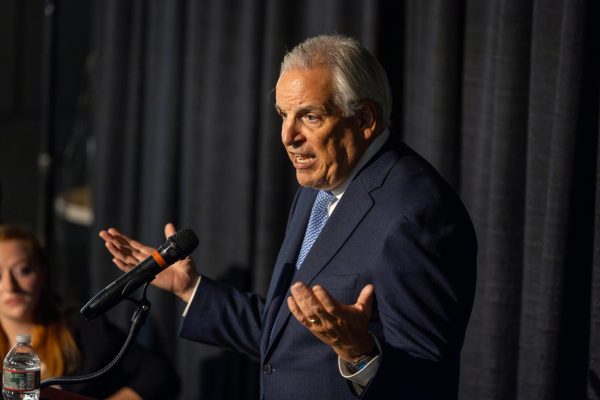History of Halloween
Wearing costumes for Halloween originated from when the Celts dressed up in order to confuse evil spirits and avoid harm during the Celtic festival of Samhain.
Halloween is creeping around the corner. Pumpkins are popping up all across town, and spooky decorations are covering up homes. It is one of the most popular holidays celebrated, but where did it come from?
Nearly 2,000 years ago, the Celtic festival of Samhain began, marking the end of summer and the harvest. The Celts believed that the door to the underworld opened around this time, allowing spirits to come through into the world of the living. While they held feasts and set a place for their deceased relatives, the Celts feared the evil spirits who may have come through as well. As a result, they dressed in costumes in order to confuse these spirits and avoid harm.
Later in the eighth century, Pope Gregory III determined that Nov. 1 will be the time to honor all saints, otherwise known as All Saints Day. The evening before ultimately became known as All Hallows Eve, and later Halloween.
It has been theorized that the church was trying to replace the festival with this church-sanctioned holiday, having believed that All Hallows Eve worshipped the Devil.
When Halloween eventually reached the United States, it was limited due to the strict Protestant belief systems that were present in New England. However, as more immigrants arrived from Europe and blended their different customs, a new kind of Halloween developed. Public events began to be held, including celebrating the harvest, telling ghost stories, dancing and playing pranks.
In the second half of the 19th century, millions of Irish immigrants arrived in the United States, escaping from the Irish Potato Famine, helping spread the celebration of Halloween even more.
Halloween eventually evolved into what we recognize today: a day of trick-or-treating, carving pumpkins and candy. How have these modern traditions come to be?
Trick-or-treating started back during Samhain when the Celts left out food to appease the spirits at night. People then began to dress up as these beings to, not only confuse the spirits but also be able to trade for food and drink.
Carving pumpkins originated back in Ireland. However, people used turnips instead to ward off evil spirits, carving frightening faces into them.
Candy initially was not used for giving treats to children during Halloween. Until the middle of the 20th century, treats such as toys, coins, nuts and fruit were given instead. Due to the rising popularity of trick-or-treating, candy companies in the 1950s formed marketing campaigns with individually wrapped candy, encouraging people to buy these instead.
Despite how long Halloween has been around, many of its aspects have not changed. Centuries later, much of the same traditions remain, and the holiday still holds its strong horror element. After learning about its history, hopefully, students will become more prepared for this upcoming spooky night.







